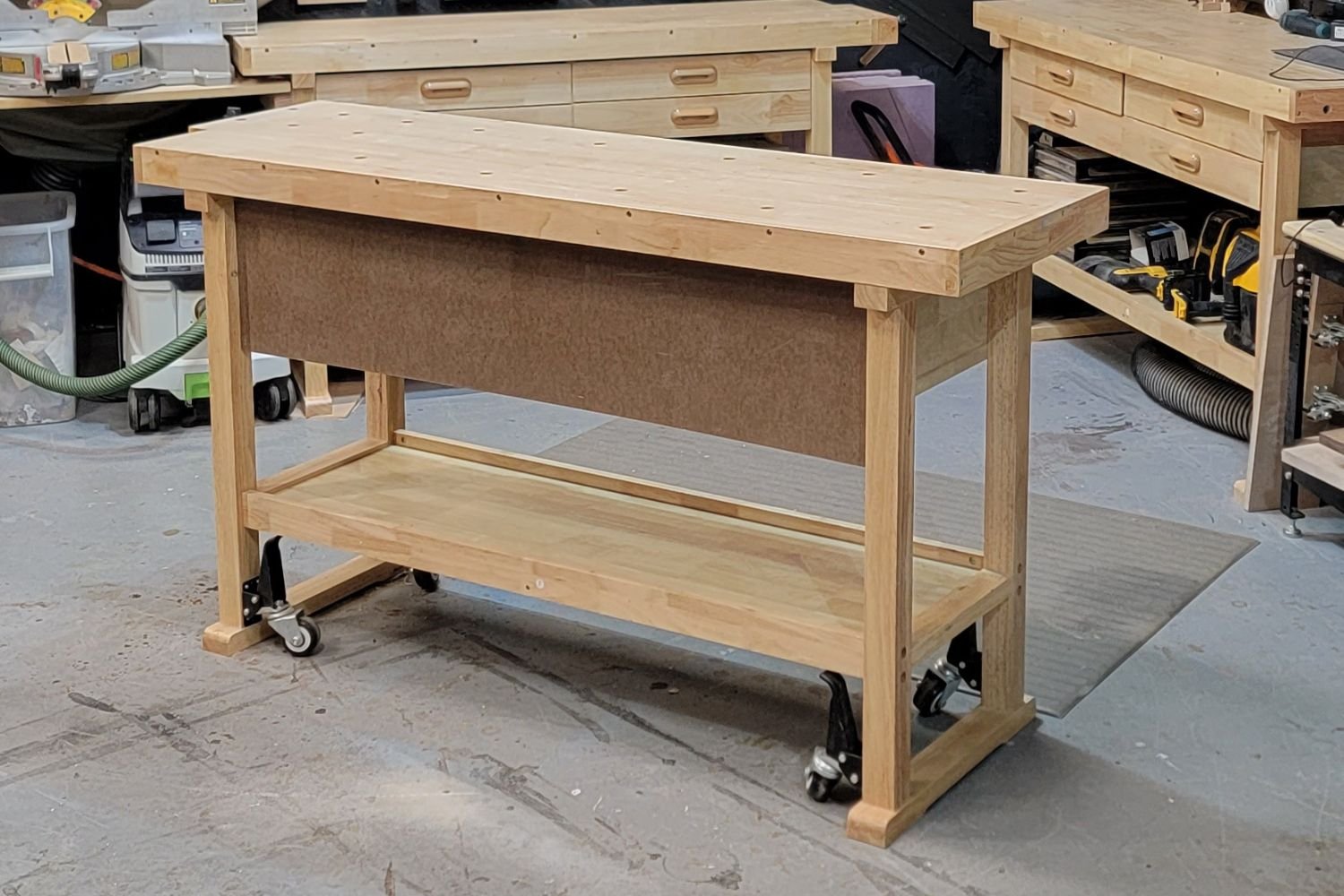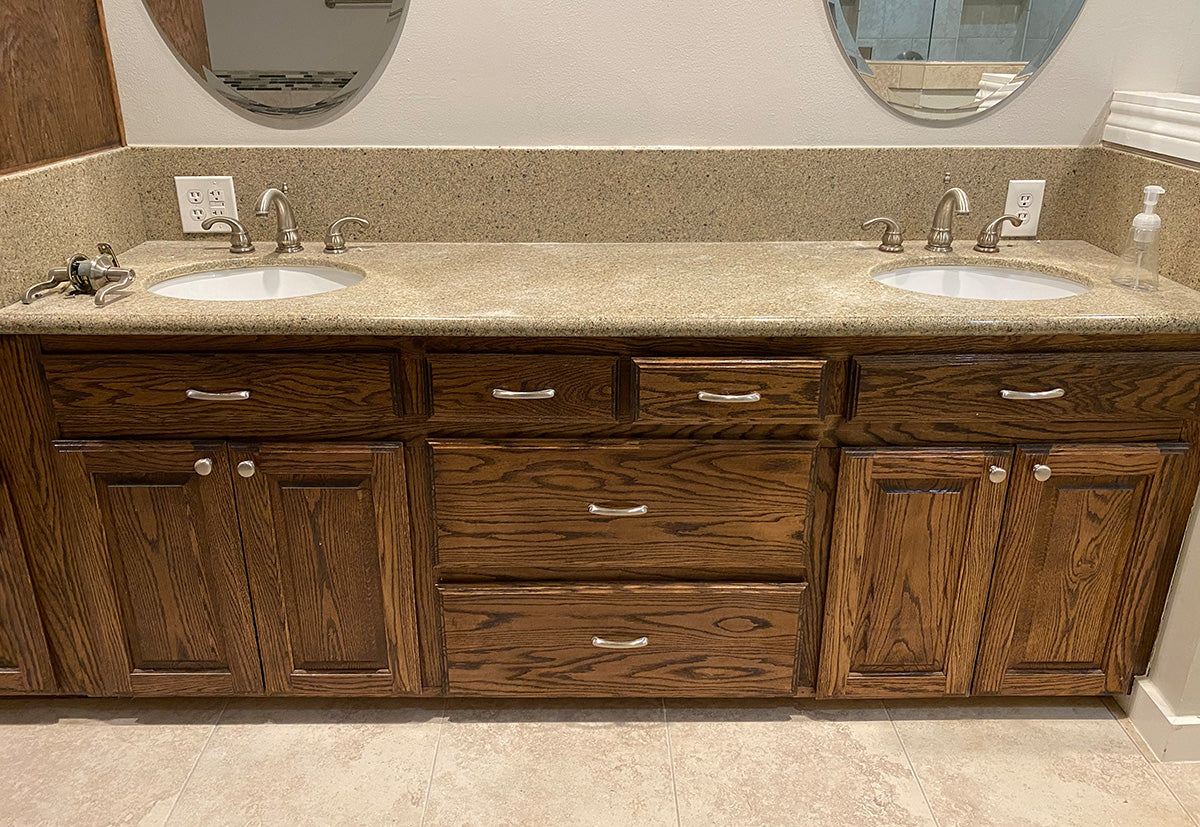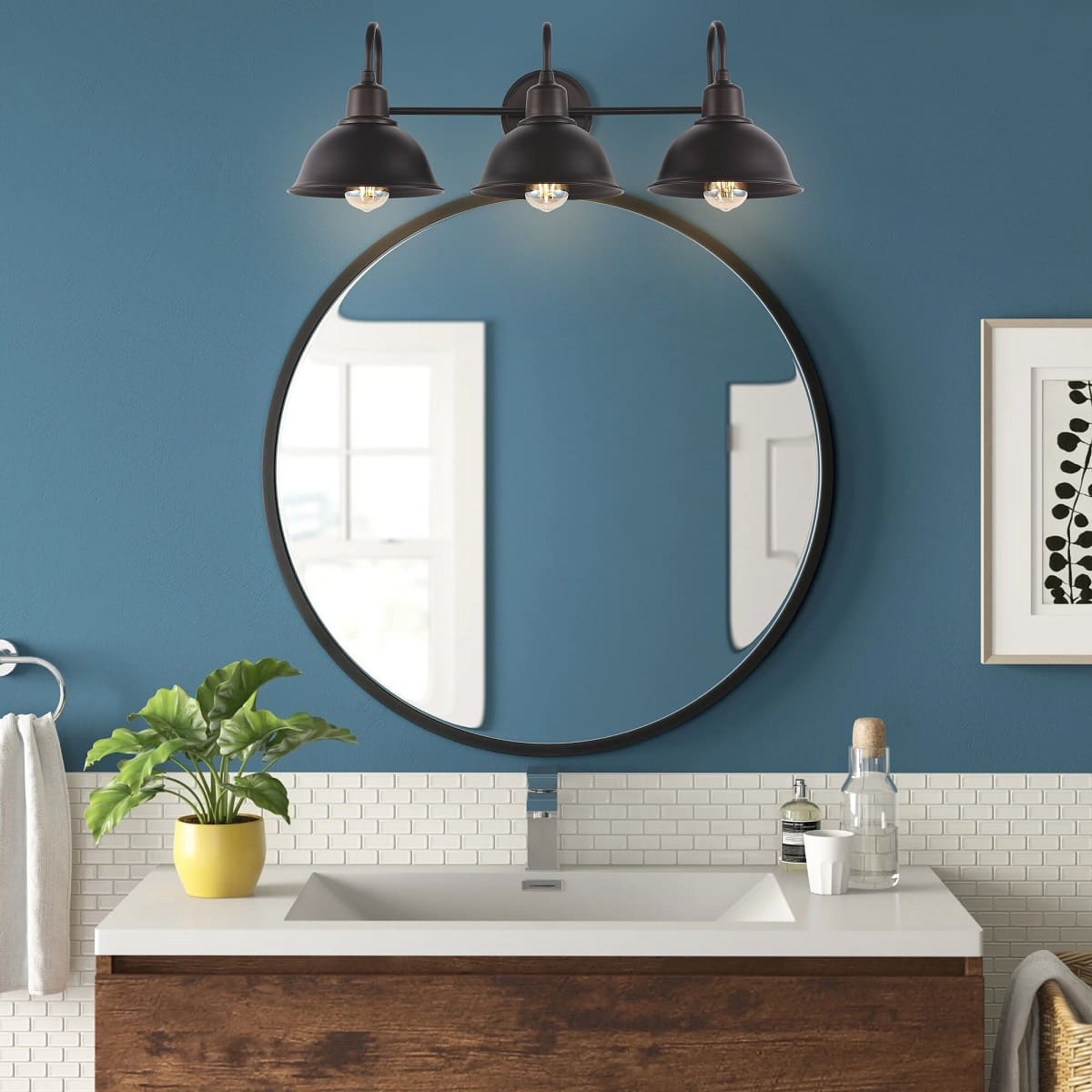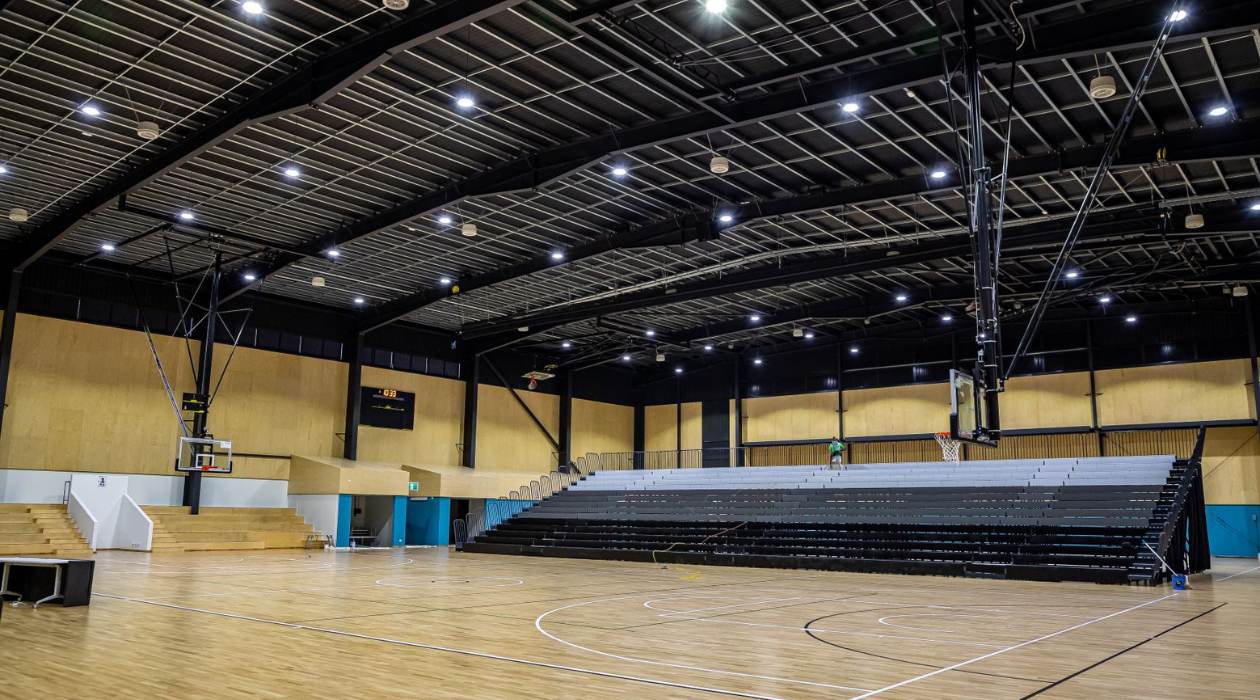

Articles
How High Should A Woodworking Bench Be
Modified: January 23, 2024
Discover the ideal height for a woodworking bench in this comprehensive article. Learn how to optimize your bench for maximum comfort and productivity.
(Many of the links in this article redirect to a specific reviewed product. Your purchase of these products through affiliate links helps to generate commission for Storables.com, at no extra cost. Learn more)
Introduction
When it comes to woodworking, having the right tools and equipment is essential for achieving precise and high-quality results. One of the most important elements in any woodworking workshop is a sturdy and well-designed workbench. A woodworking bench serves as the foundation for your projects, providing a stable and secure surface for cutting, shaping, and assembling wood pieces.
While choosing the right type of material and construction for your woodworking bench is crucial, another important factor to consider is the height of the bench. The height of your workbench can greatly impact your comfort, posture, and overall productivity during woodworking tasks. Determining the ideal bench height involves a combination of factors, including your height, the type of work you do, and ergonomic considerations.
In this article, we will explore the various factors that go into determining the proper height for a woodworking bench. We will also discuss the standard bench heights recommended for different types of woodworking tasks. Additionally, we will provide guidance on how to measure and adjust your bench height to ensure optimal comfort and efficiency. So let’s dive in and find out how high your woodworking bench should be!
Key Takeaways:
- Finding the perfect height for your woodworking bench is crucial for comfort and productivity. Consider your tasks, measurements, and ergonomic factors to create a personalized and efficient workspace.
- A well-designed and adjustable woodworking bench enhances precision, efficiency, and versatility. Invest in a durable bench that supports your craftsmanship and brings your woodworking projects to new heights.
Read more: How To Build Woodworking Bench
Factors to consider when determining bench height
When it comes to determining the ideal height for your woodworking bench, there are several important factors to consider. By taking these factors into account, you can ensure a comfortable and efficient working environment. Let’s take a look at these factors:
- Height: Your own height plays a significant role in determining the height of your woodworking bench. Ideally, your bench height should allow you to work without straining or hunching over. A bench that is too low can lead to back and neck pain, while a bench that is too high can cause discomfort in your shoulders and arms. Consider your own height and select a bench height that allows you to work comfortably with your arms and shoulders in a relaxed position.
- Workbench tasks: The type of work you do on your bench will also influence the optimal height. Different woodworking tasks require different bench heights. For example, if you primarily work on hand-held tools and need precision and control, a lower bench height may be more suitable. On the other hand, if you do a lot of sawing and need leverage for heavier tasks, a higher bench height may be preferable.
- Tools and equipment: Consider the tools and equipment you use regularly in your woodworking projects. The height of your bench should allow you to comfortably use these tools without straining or reaching too far. Take into account the height of your vise, the tabletop height of your power tools, and any other fixtures or equipment that you frequently utilize.
- Posture and ergonomics: Ergonomics play a vital role in maintaining good posture and reducing the risk of injuries while woodworking. Your bench height should promote a natural and neutral posture, with your arms and hands in a relaxed position. Avoid hunching over or reaching too far. Adjust your bench height so that you can stand straight and comfortably work on your projects.
- Personal preference: Lastly, personal preference plays a part in determining the ideal bench height. Some woodworkers may have specific preferences based on their individual comfort and work style. Experiment with different heights and adjust your bench to find the height that feels most comfortable and efficient for you.
By considering these factors, you can determine the optimal height for your woodworking bench. Remember, the goal is to create a workbench that allows you to work comfortably, efficiently, and with minimal strain on your body. In the next section, we will explore the standard bench heights recommended for various woodworking tasks.
Standard bench heights for different woodworking tasks
While there is no one-size-fits-all answer to the ideal bench height, there are some general guidelines and recommended bench heights for different woodworking tasks. These measurements can serve as a starting point and can be adjusted based on your own height and preferences. Let’s take a look at the standard bench heights for common woodworking tasks:
- Hand tool work: For tasks that involve hand tools such as chisels, planes, and carving tools, a bench height between 32 to 36 inches (81 to 91 cm) is often recommended. This lower bench height allows for better control and precision when using handheld tools.
- Power tool work: For tasks that primarily involve power tools like table saws, routers, and jointers, a higher bench height is advantageous. A bench height between 36 to 40 inches (91 to 102 cm) is commonly used for power tool work, allowing for comfortable operation and better visibility of the workpiece.
- Assembly and clamping: When it comes to assembly and clamping tasks, a bench height between 28 to 32 inches (71 to 81 cm) is often recommended. This lower bench height provides better leverage and control when fastening or gluing pieces together.
- Outfeed and support tables: If you have outfeed or support tables attached to your woodworking bench, consider setting their height slightly lower than the main bench height. This allows for smoother material transfer and ensures that the workpiece remains level and well-supported during cutting or shaping.
- Adjustability: Some woodworkers prefer the flexibility of an adjustable bench, which allows them to modify the bench height depending on the task at hand. Adjustable benches are convenient for accommodating different woodworking techniques and individual preferences.
It’s important to remember that these are general guidelines, and you should adjust the bench height to suit your own height, working style, and comfort level. Take the time to experiment with different heights and make adjustments until you find the optimal bench height for your specific woodworking needs.
In the next section, we will explore how to measure and adjust your bench height to ensure a comfortable and ergonomic working environment.
How to measure and adjust bench height
Measuring and adjusting the height of your woodworking bench is a straightforward process that can greatly improve your comfort and productivity. Here are some steps to help you measure and adjust your bench height:
- Measure your elbow height: Stand upright with your arms naturally at your sides. Measure the distance from the floor to your elbow. This measurement will serve as a starting point to determine the approximate height of your bench.
- Consider your tasks: Think about the type of woodworking tasks you perform most frequently. If you primarily use hand tools, a lower bench height may be suitable. If you use power tools or perform assembly tasks, a higher bench height may be more appropriate.
- Adjust the bench: Based on your measurements and task preferences, adjust the height of your bench accordingly. If the bench is too low, consider adding robust blocks or adding adjustable feet. If the bench is too high, remove some of the blocks or make the feet shorter. Continuously test and adjust until you find the ideal height.
- Use adjustable features: If your bench has adjustable features such as adjustable legs or a hydraulic lift, take advantage of them. These features allow you to easily modify the height to suit different tasks or accommodate different users.
- Try it out: Once you have made adjustments to your bench height, spend some time working at the bench to determine if the new height feels comfortable and allows for proper posture and ergonomics. If necessary, make further adjustments until you find the perfect height.
- Consider a separate work surface: If you have multiple people working in your woodworking space or need to accommodate different tasks and heights, consider using a separate work surface like a mobile workbench or a height-adjustable workbench.
Remember, finding the ideal bench height is a personal preference, and what works for one woodworker may not work for another. It’s important to take your measurements, consider your tasks, and make adjustments based on your comfort and productivity levels.
In the next section, we will discuss the ergonomic considerations when determining the height of your woodworking bench.
The ideal height for a woodworking bench is typically around 34-36 inches, but it ultimately depends on your own height and comfort. Stand up straight with your arms at your sides, and measure from the floor to the crease in your wrist to find the best height for you.
Ergonomic considerations for proper bench height
When determining the height of your woodworking bench, it is essential to consider ergonomic factors to promote proper posture, reduce strain on your body, and prevent work-related injuries. Here are some ergonomic considerations to keep in mind:
- Neutral posture: The height of your bench should allow you to maintain a neutral posture while working. This means that your back should be straight, your shoulders relaxed, and your arms comfortably bent at a 90-degree angle. Avoid hunching over or stretching too far as this can lead to discomfort and muscle fatigue.
- Forearm position: Your forearms should be parallel to the floor when working at your bench. This ensures that your wrists are in a neutral position, reducing the risk of repetitive strain injuries like carpal tunnel syndrome. Adjust the height of your bench so that your forearms are at a comfortable and natural angle.
- Eye level: Consider the height of your work surface in relation to your eye level. The workpiece and tools should be at a height that allows you to maintain good visibility and avoid straining your neck or tilting your head excessively. Adjust the height of your bench or use appropriate supports to achieve a comfortable eye level.
- Footrest: Having a footrest or foot support can help alleviate pressure on your lower back and legs. Ensure that your feet are well-supported and resting flat on the floor or footrest while working at your bench. This promotes stability and prevents excessive strain on your lower body.
- Movement and flexibility: While bench height is important, it’s also crucial to have enough space underneath the bench to accommodate your legs and provide freedom of movement. Avoid having any obstructions that restrict your leg movement or force you into an uncomfortable position.
- Adjustability: Consider the adjustability options of your workbench. Having an adjustable bench allows you to fine-tune the height according to individual preferences and tasks. You can explore options such as height-adjustable legs or a hydraulic lift mechanism to easily modify the bench height as needed.
By paying attention to these ergonomic considerations, you can ensure that your woodworking bench is set at a height that promotes proper posture, reduces strain on your body, and enhances your overall comfort and productivity.
Having discussed the ergonomic aspects, we can now move on to understanding the importance of a comfortable and functional woodworking bench.
Read more: How High Should Bed Be
The importance of a comfortable and functional woodworking bench
A woodworking bench is much more than just a surface to work on. It is the centerpiece of any woodworking shop, and its design and functionality can significantly impact the quality of your work and your overall woodworking experience. Here are a few reasons why having a comfortable and functional woodworking bench is essential:
- Comfort and posture: The right bench height and ergonomic features ensure that you can work comfortably and maintain proper posture. A comfortable bench reduces the risk of injuries and allows you to work for extended periods without experiencing discomfort or fatigue. It promotes better blood flow and reduces strain on your muscles and joints.
- Precision and accuracy: A stable and sturdy work surface is crucial for achieving precise and accurate woodworking results. A well-built bench provides the necessary support and stability for cutting, shaping, and assembling wood pieces. It allows you to work with confidence, knowing that your workpiece is securely held in place.
- Efficiency and productivity: A functional workbench is designed with efficiency in mind. It provides ample space for organizing your tools and materials, keeping them within reach and minimizing time wasted searching for what you need. A clutter-free and well-organized bench allows you to work efficiently and complete projects more quickly.
- Versatility and adaptability: A well-designed woodworking bench offers versatility and adaptability to accommodate different tasks and techniques. It can have features like built-in vises, clamping systems, and storage options. By having a bench that can be easily adjusted and customized, you can work on a wide range of woodworking projects with ease.
- Longevity and durability: A quality woodworking bench is built to last. It is constructed from durable materials that can withstand heavy use and resist wear and tear. Investing in a well-built bench ensures that it will serve you for years to come, providing a reliable and sturdy work surface for your woodworking endeavors.
In summary, a comfortable and functional woodworking bench is essential for creating a pleasant and efficient working environment. It promotes proper posture, enhances precision and accuracy, boosts productivity, and allows for versatility in woodworking tasks. By investing in a well-designed and ergonomic bench, you can elevate your woodworking experience and achieve outstanding results in your projects.
Now that we understand the importance of a comfortable and functional woodworking bench, let’s wrap up our discussion.
Conclusion
Choosing the right height for your woodworking bench is crucial for creating a comfortable and efficient working environment. By considering factors such as your height, the tasks you perform, and ergonomic considerations, you can determine the ideal bench height that promotes proper posture and minimizes strain on your body.
It’s important to remember that bench height is not a one-size-fits-all solution. Personal factors and preferences play a significant role in finding the right height for you. Whether you’re using hand tools, power tools, or performing assembly tasks, adjusting your bench height accordingly can greatly enhance your woodworking experience.
Standard bench heights provide general guidelines for different woodworking tasks. However, these are starting points that can be modified based on individual measurements and preferences. Experimentation and adjustment are key to finding the perfect bench height that suits your specific needs and promotes optimal comfort and productivity.
Ergonomic considerations, such as maintaining a neutral posture, positioning your forearms correctly, and ensuring proper eye level, are crucial for preventing injuries and promoting long-term health while working at your bench. Take the time to measure, adjust, and fine-tune your bench height to create a workspace that supports your well-being.
A comfortable and functional woodworking bench is more than just a surface; it is a vital tool that contributes to the quality of your work. By investing in a well-designed and durable bench, you can enhance precision, efficiency, and versatility in your woodworking projects. A reliable workbench that caters to your needs will serve as the foundation for your woodworking endeavors for years to come.
In conclusion, selecting the right bench height, considering ergonomic factors, and ensuring functionality are essential for a rewarding woodworking experience. So, take the time to evaluate your needs, make the necessary adjustments, and create a woodworking bench that supports your craftsmanship and brings your woodworking projects to new heights.
Frequently Asked Questions about How High Should A Woodworking Bench Be
Was this page helpful?
At Storables.com, we guarantee accurate and reliable information. Our content, validated by Expert Board Contributors, is crafted following stringent Editorial Policies. We're committed to providing you with well-researched, expert-backed insights for all your informational needs.















0 thoughts on “How High Should A Woodworking Bench Be”